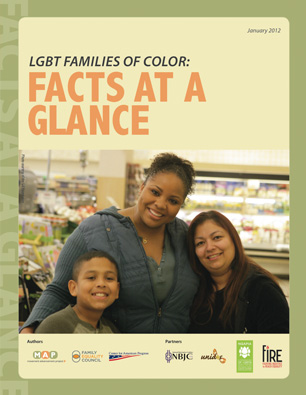The Bottom Line
The intersection of inequitable laws, social stigma, and race-based discrimination collide in ways that create significant challenges for LGBT families of color. Children of color are more likely to be raised by de facto parents like grandparents, aunts, and other relatives, and are more likely to be raised by LGBT parents. As a result, antiquated laws that only protect children with legal ties to their parents have a disproportionately negative impact on children being raised in LGBT families of color.
LGBT Families of Color: Facts at a Glance examines these families and the ways children living in LGBT families of color face disproportionate economic struggles, unequal access to health care, and dual burdens of social stigma and discrimination. It also provides a set of key recommendations for addressing these harms and inequities.
The brief, which is based on content from All Children Matter: How Legal and Social Inequalities Hurt LGBT Families, was produced in partnership with the National Black Justice Coalition (NBJC), Unid@s, the National Queer Asian Pacific Islander Alliance (NQAPIA), and Fighting Injustice to Reach Equality (FIRE), an initiative of the Center for American Progress. Both reports were co-authored by the Movement Advancement Project (MAP), the Family Equality Council and the Center for American Progress.
LGBT Families of Color: Facts at a GlanceDownload
Recommended citation:
Movement Advancement Project, Family Equality Council, Center for American Progress. January 2012.
LGBT Families of Color: Facts at a Glance.
https://www.lgbtmap.org/lgbt-families-of-color-facts-at-a-glance (date of access).


